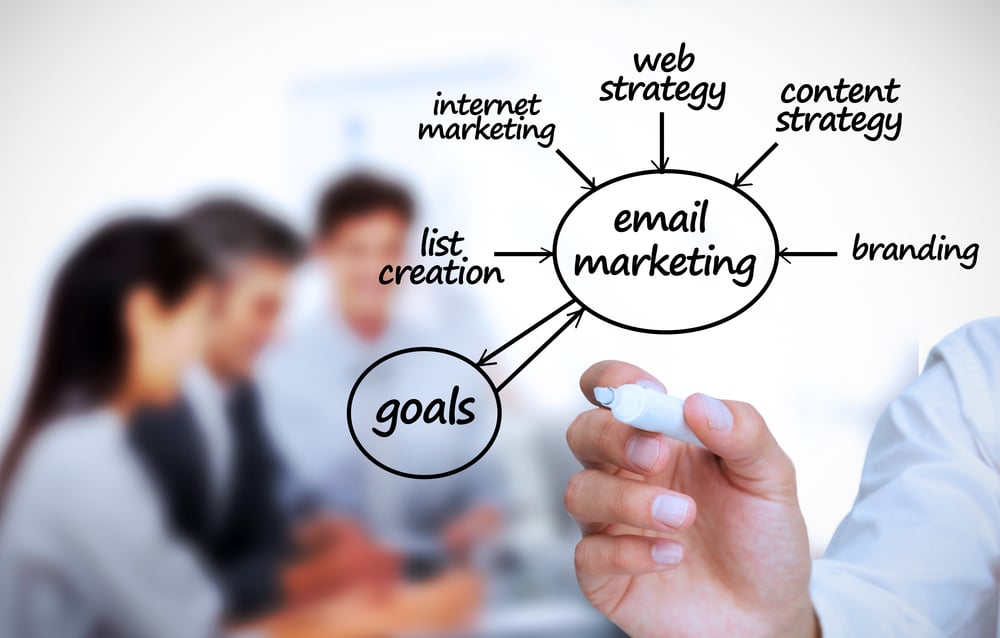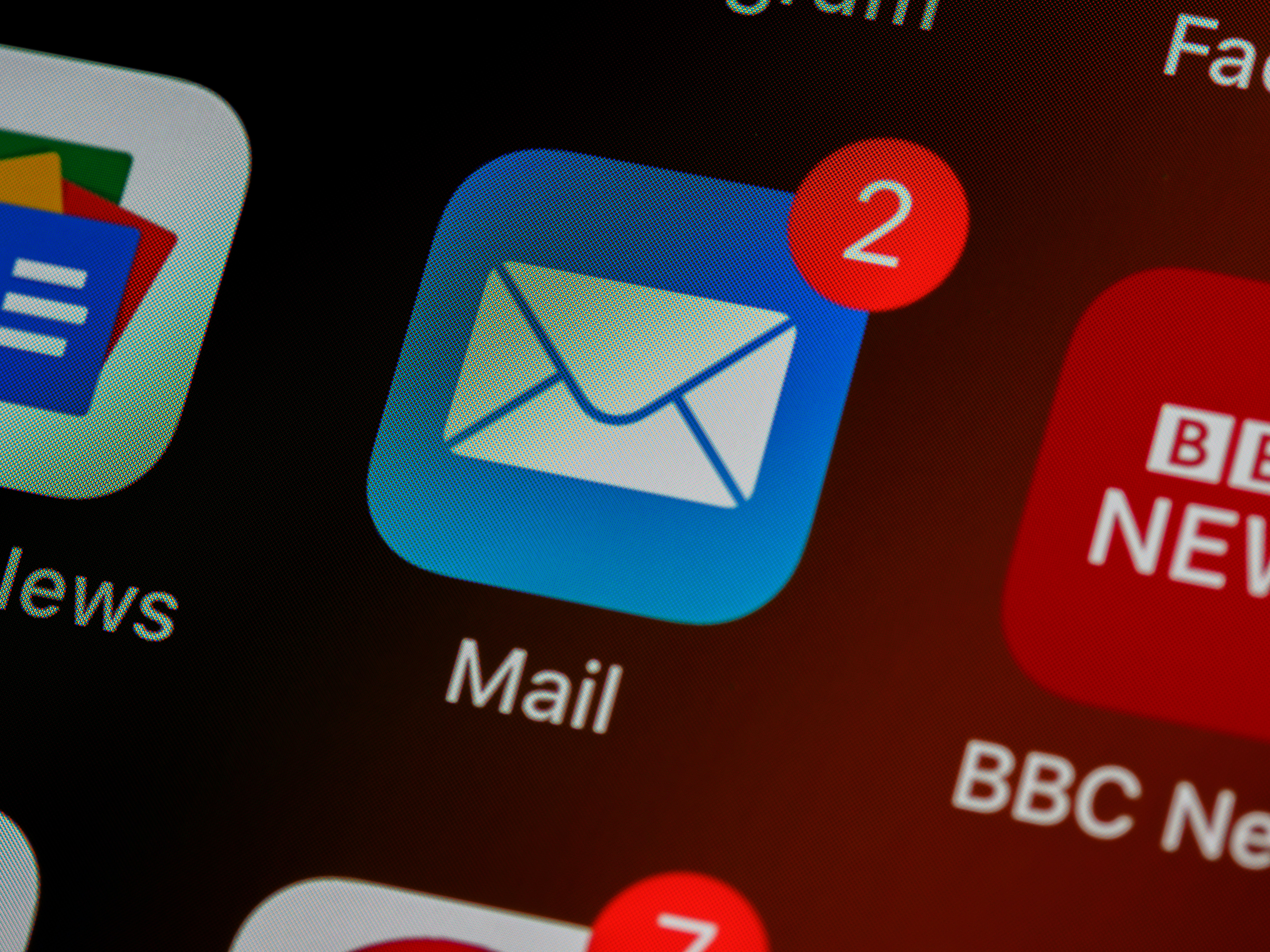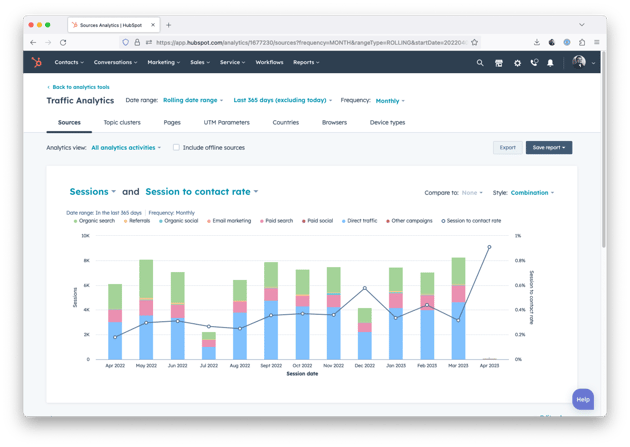The 5 Key Stages Of An Effective Inbound Marketing Strategy
-
Construct a clear and consistent inbound marketing plan that includes creating quality content, optimizing for SEO, and social media marketing, to navigate the digital landscape effectively.
-
Identify and define your audience and buyer personas for tailored content that resonates. Build engaging content for every stage of the buyer's journey, from awareness to decision-making, using various formats like blogs, videos, webinars, and case studies.
-
Employ multiple marketing channels, including social media, search engines, and email, to reach your audience where they are. This multi-channel approach ensures a wider reach, helping to build your industry authority.
-
Continually analyze and adjust your marketing strategy based on data from social media insights, website analytics, and customer feedback. This allows for ongoing improvement and better alignment with your audience's needs.
Table of Contents
- Understanding the Inbound Marketing Methodology
- The 5 Key Stages of an Effective Inbound Marketing Strategy
- Tips For Creating a Strong Inbound Marketing Strategy
- Conclusion
Introduction
Just like constructing a sturdy house, building a successful marketing strategy requires a solid foundation, a well-thought-out blueprint, the right tools, and an expert team.
You are the architect, the master builder, bringing all these elements together to create a strategy that stands strong in the ever-evolving digital landscape.
In this comprehensive guide, we'll illuminate the path to success, providing you with a detailed roadmap for designing a formidable inbound strategy. Let's roll up our sleeves and dive in!
Understanding the Inbound Marketing Methodology
To develop a successful inbound marketing process, it is crucial to understand the fundamentals of:
-
Developing buyer personas
-
Mapping the buyer's journey
-
Creating high-quality content
-
Setting measurable goals

Developing Buyer Personas
Developing buyer personas is a crucial step in honing your inbound efforts, as it allows you to create a semi-fictional representation of your target customer. You can (and should) also use personas for outbound marketing. This process involves gathering real data about your existing customers' demographics and online behavior, combined with educated speculation.
As you craft content addressing each persona's unique challenges and interests, your message will resonate more deeply than if you were to take a one-size-fits-all approach.
Mapping the Buyer's Journey
Mapping the buyer's journey is a crucial aspect of inbound marketing that helps you ensure your content resonates with potential customers at every step. To effectively map the buyer's journey, follow these steps:
-
Identify the three main stages of the buyer's journey: awareness, consideration, and decision.
-
For each stage, pinpoint the specific questions, concerns, and pain points your leads might have.
-
Use tools like HubSpot to analyze existing customer data and gain insights on their behavior and needs throughout their journey.
-
Develop targeted content for each stage that addresses these pain points and aligns with your marketing goals.
-
Awareness Stage: Create educational content such as blog posts and whitepapers to inform prospects about their problems and potential solutions.
-
Consideration Stage: Offer in-depth resources like webinars or case studies that showcase how your product or service can help them overcome their challenges.
-
Decision Stage: Provide testimonials, free trials, or personalized demos to help leads make a confident buying decision.
-
-
Leverage multiple marketing channels like social media posts, email marketing campaigns, and SEO optimization to reach your target audience consistently throughout their journey.
-
Continuously assess your efforts by analyzing key metrics such as website traffic sources, conversion rates, lead quality scores, and customer feedback.
By carefully mapping the buyer's journey, you can create tailored content for each stage of the process that speaks directly to your prospective customers' unique needs and preferences—ultimately driving greater business growth through more personalized inbound marketing strategies.
Creating High-Quality Content
Creating high-quality content is a critical component of any successful inbound marketing campaign. It involves identifying the pain points and questions potential customers have in each stage of their buyer's journey, and developing engaging and informative content that speaks to those needs.
This could include blog posts, social media updates, webinars, podcasts, or videos. Content should be focused on delivering value to the reader—offering insights, tips, or solutions they can take away and apply will help establish your brand as a thought leader in your industry sector.

Setting Measurable Goals
Setting measurable goals is a crucial element of an effective inbound strategy. Without clearly defined goals, it's difficult to measure success or determine what works and what doesn't.
SMART (specific, measurable, attainable, relevant, and time-bound) goals are the gold standard in inbound marketing because they provide a clear roadmap for success. For example, increasing lead generation by 20% over six months using social media campaigns can be a SMART goal.
With this kind of focus on measurable results, marketing teams can align their efforts with business objectives and achieve significant ROI while demonstrating accountability to executives.
The 5 Key Stages of an Effective Inbound Marketing Strategy
In this section, we'll explore the five key inbound marketing stages: attracting the right prospects, converting website visitors into leads, closing sales and converting leads into customers, providing exceptional customer service to delight your contacts through their customer journey, and retaining them with ongoing engagement.
Stage 1: Becoming a Magnet for The Right Prospects
First things first, attracting the right prospects. Here's your game plan:
-
Make your website search engine friendly: Start by figuring out what keywords and phrases your potential customers are looking for. Sprinkle these throughout your website content, titles, meta descriptions, and URLs.
-
Produce valuable content: Deliver top-notch content that addresses your target audience's issues, queries, and interests. This could be anything from blog posts and videos to whitepapers and infographics.
-
Flex your social media muscles: Find out where your target audience is hanging out online and join the party. Post engaging content regularly and consider using paid advertising to reach more people.
-
Entice with lead magnets: Offer valuable resources or tools in return for contact details. Think e-books, webinars, free trials, product demos, and consultations.
Implement these tactics in the attract stage, and you'll start drawing in more qualified leads who are genuinely interested in what you're serving up.
SEO Optimization
If your inbound strategy were a sandwich, SEO would be the bread. It's what holds everything together. To optimize your website for search, do some keyword research and weave those keywords naturally into your content.
Don't forget on-page optimization techniques like meta descriptions, header tags, and alt text. These can give your Google rankings a serious boost. And remember, link-building is your friend - getting high-quality backlinks from trusted sources can really supercharge your SEO.
Creating Valuable Content
If SEO is the bread of your marketing efforts, helpful content is the meat. Your audience is starving for information, so make sure you're serving up something tasty.
By doing this, you'll position yourself as a trusted authority in your field and build stronger relationships with potential customers. Just make sure you're targeting the right audience at each stage of their journey by getting to know who they are and what problems they're trying to solve.
Social Media Marketing
Social media marketing is like the secret sauce for your content marketing efforts. With billions scrolling through their feeds every day, it's a channel you can't afford to ignore.
These platforms give you a golden opportunity to attract customers throughbrand building, and to create awareness and loyalty, drive traffic to your website, and generate leads. By tuning into social listening tools and tailoring your content to each platform's unique features, you can increase your organic reach and get more bang for your buck with paid advertising.

Stage 2: Turning Website Visitors Into Leads
Once you've got potential customers flocking to your website, it's time to turn them into qualified leads. Here's how:
-
Set up Dedicated Landing Pages: A landing page is a standalone page designed to convert visitors into leads. It should be distraction-free, with a clear call-to-action (CTA) and a form that captures the essential contact information.
-
Employ Calls-to-Action (CTAs): CTAs guide visitors on what to do next on your website. They should be compelling, visible, and relevant to the content on the page.
-
Forms: A form captures visitor information for future engagement. It should be short and sweet.
-
Leverage Lead Magnets: Offer a valuable resource like eBooks, whitepapers, or webinars in exchange for contact information on your landing pages.
Landing Pages
As the mastermind behind your marketing efforts, you know the importance of engaging prospective customers with valuable content. A crucial part of this process is using landing pages to turn those visitors into quality leads.
Think of a landing page as a welcoming committee for a lead who has clicked on a call-to-action. Its job is to grab their attention and encourage them to fill out a form or take another desired action.
By offering helpful and relevant information on your landing page, you can tempt potential customers to give their contact information in exchange for something they find valuable - like an e-book or a chance to sign up for a webinar.
Calls-to-Action
Calls-to-Action, or CTAs for short, are the backbone of any inbound marketing strategy. They nudge website visitors to take specific actions that guide them further along the buyer's journey, bringing them closer to becoming customers.
Your CTAs should be tailored to each stage of the buying process and provide clear instructions on what action the user should take next.
When you're crafting your CTAs, think about not just what you want people to do, but also where they are in their buying journey. If they're still in the awareness phase, asking them to make a purchase could be a bit too forward. Instead, a CTA at this stage might invite them to learn more about your product or service by downloading a free guide or signing up for your newsletter.
Forms
Forms are like the fishing nets—they help you catch valuable information about your leads and customers. Strategically using forms, you can gather data such as names, email addresses, job titles, and more from website visitors who show interest in your content or products/services.
Remember to design your forms with the user experience in mind - keep them short and simple while asking for only the most necessary information at each stage of the buyer's journey.
Lead Magnets
Lead magnets are the shiny objects that attract leads at each of the five key stages of an effective inbound marketing strategy. As a marketing whiz, you know the importance of not just attracting leads, but also converting them into customers.
Lead magnets can help you hit that target by offering valuable content or solutions to your ideal customer's pain points in exchange for their contact information. Examples include eBooks, whitepapers, checklists, webinars, and free trials.
Did you know, 47% of buyers viewed three to five pieces of content before engaging with a sales rep? So if you're keen to drive more traffic to your website and make your sales reps happy by adding more leads to the sales funnel—incorporating lead magnets is a no-brainer.

Stage 3: Converting Leads to Customers
Alright, we've attracted the visitors, engaged them, and turned them into leads. Now, it's time for the next big step: converting those leads into customers. Don't worry, we've got this!
Fostering Team Communication
Open and continuous communication between the marketing and sales teams is key. It's like a relay race—the baton needs to be passed smoothly to avoid any stumbles. So make sure your marketing and sales teams are synchronized and understand each other's goals and strategies.
Lead Scoring
This is where we size up the leads and see who's most likely to become customers. It's like matchmaking but for business. The goal here is to ensure that the sales reps are putting their energy into the leads that are most likely to convert. Through effective lead scoring you can significantly increase the effectiveness of your sales process.
Sales Enablement
Let's empower the sales team with the necessary tools and resources to seal the deal. Remember, knowledge is power. The better equipped your sales team is with information about the leads, the more effective they'll be. As a bonus, you'll be better aligned with the sales team, leading to a better experience for your customers, and a better overall sales process.
CRM Management
If your business were a ship, a CRM would be the compass guiding you. It helps track lead interactions, nurture prospective clients, and analyze customer behavior to identify opportunities. It's like having a personal assistant for every customer!
Don't Forget Your Existing Customers
It's not all about getting new customers. We also need to keep the current ones happy. How? Through excellent customer service, personalized communication, swift resolution of issues, satisfaction surveys, and loyalty programs. Remember, a happy customer is a loyal customer!
Stage 4: Customer Delight
Customer delight isn't just about meeting expectations, it's about exceeding them. Here's how we can make our customers feel valued and special.
Swift Problem Resolution
When issues arise, and they will, being quick and efficient in resolving them shows that we value our customers' business. It's about showing empathy and commitment to their satisfaction.
Customer Satisfaction Surveys
Feedback is gold. Let's use customer satisfaction surveys to learn what we're doing right and where we can improve. This will help us fine-tune our processes, products, and services.
Go the Extra Mile
Let's surprise our customers by doing more than they expect. A discount on a future purchase, a personalized thank-you note, or even just a friendly check-in call can create a memorable experience.
Promote Customer Advocacy
Encourage our satisfied customers to leave positive reviews and share their experiences. Word-of-mouth is a powerful marketing tool, and happy customers telling their stories can help us build trust with potential customers.

Stage 5: Customer Retention—Keeping the Flame Alive!
Finally, we need to ensure that our customers stay with us for the long haul. Here's how we can make sure our relationship with them remains strong.
Email Marketing
Let's keep in touch with our customers by sending regular, personalized emails. Special offers, updates about our products/services, or even just a friendly hello can keep us at the forefront of their minds.
Loyalty Programs
Everyone loves a good deal. Let's reward our long-term customers with special incentives through loyalty programs. This will encourage repeat business and show our customers that we appreciate them.
Encourage Reviews and Referrals
Let's encourage our happy customers to spread the word. Whether it's through social media, email campaigns, or a referral program, positive reviews and referrals can help us attract new customers.
Personalized Communication
Remember, personalization is key. Using CRM or marketing automation tools, we can tailor our messages based on our customers' preferences and interactions.
Prompt Problem Resolution
Let's continue to resolve any issues quickly and efficiently. Whether it's over the phone, through email, or on social media, we should always be ready to assist our customers.
Tips For Creating a Strong Inbound Marketing Strategy
Designing a strong inbound marketing strategy is like building a house. You need a solid foundation, an architectural plan, the right materials, and a capable crew. And you? You're the master builder overseeing it all. Let's dive into this blueprint for success.
Developing A Clear And Consistent Plan
When it comes to inbound marketing, a clear and consistent plan is your North Star. It helps you navigate the twists and turns of the digital landscape.
You've got to set specific goals and priorities, identify your target audience, and tailor your buyer personas. Think of it like this: you wouldn't set out on a road trip without a map, would you?
And where would we be without our trusty toolbox? HubSpot's Marketing Dashboard is just the tool you need to keep track of important metrics like website traffic, conversion rates, and customer lifetime value. It's like a high-tech compass guiding your marketing journey.
And don't forget to couple your high-quality content with techniques like SEO and social media marketing. This combo ensures your brand stays top-of-mind and relevant.
Defining Your Target Audience And Personas
Defining your target audience and personas is like laying the foundation for your marketing house. You need to understand who they are, what challenges they face, and how they make decisions.
Let's say you're a B2B tech company specializing in software solutions for small businesses. Your buyer persona might be a busy business owner juggling finances and employee schedules. By knowing this, you can develop content that truly resonates with them.
Building Relevant And Engaging Content For Each Stage Of The Journey
Creating content is like building the walls of your house. From the awareness stage to decision-making, you need to understand what kind of information your audience needs at each step. That's your blueprint.
This means constructing different types of content—blog articles, videos, social media posts, webinars, case studies, and more. Each piece of content is a brick in the wall of your marketing strategy.
During the awareness stage, when prospects are just dipping their toes into the research pool, you can offer content like 'how-to' guides or educational blog posts. These resources offer valuable insights without sounding like a sales pitch.
As prospects wade further into the consideration stage, you might provide more detailed product comparisons or demos. These can be offered through landing pages or email nurturing campaigns. It's all about the right content for the right stage.
![]()
Utilizing Multiple Marketing Channels To Reach Your Audience
Think of utilizing multiple marketing channels as opening the doors and windows to let in the light. It's crucial to meet your audience where they are, whether that's on social media, search engines, or email.
By using a range of channels, you're casting a wider net to catch potential customers and build your authority in the industry. It's like lighting up each room of your house to make it warm and welcoming.
Continuously Analyzing And Adjusting Your Strategy Based On Data
Finally, your marketing strategy should be as flexible as a well-designed open floor plan. This means continuously analyzing data, adjusting your approach based on what's working (or what isn't), and keeping up with the latest trends and best practices.
Monitoring social media insights, website analytics, lead generation stats, and customer feedback provides valuable insights. This continuous feedback loop helps you tweak your tactics and align better with your audience's needs.
If a piece of content isn't performing well, it's time to revisit and revise. Maybe it's the way it was written or marketed, or perhaps it's just not a hot topic for your audience. Keeping informed about industry news or competitor activity also gives you an edge when making strategic decisions.
So, there you have it—your blueprint for a successful inbound marketing strategy. We'd love to hear about your journey. What worked for you? What didn't? Let's continue the conversation!
Frequently Asked Questions
What are the five crucial steps in an effective inbound marketing strategy?
-
Attracting potential customers with meaningful content.
-
Turning visitors into leads using relevant offers and calls-to-action.
-
Closing sales by nurturing leads with tailored messaging.
-
Delighting customers with personalized experiences and excellent service, prompting them to share their positive experience.
-
Analyzing and refining strategies based on the results for continuous improvement.
How can I create engaging content for my inbound marketing efforts?
-
Understand your audience personas and tailor content to their interests or pain points.
-
Create a variety of content, including how-to guides, engaging social media posts, and informative video tutorials.
-
Ensure your content provides value and resonates with your audience.
What tools do I need to manage my inbound marketing campaign effectively?
-
Utilize tools like Google Analytics and HubSpot for essential metrics like bounce rate and conversion rate.
-
Implement SEO software to optimize content around frequently searched keywords.
-
Leverage email automation systems to streamline lead nurturing and prevent missed opportunities.
Can paid ads enhance the effectiveness of my overall Inbound Marketing Strategy?
-
Yes, paid ads can boost your inbound marketing strategy, but their effectiveness depends on your budget and market competition.
-
Paid ads can be helpful when trying to establish a presence in new markets.
-
A mixed approach of earned and paid channels is generally recommended to ensure maximum impact without sacrificing long-term growth.
Conclusion
In conclusion, implementing a successful inbound marketing strategy involves following the 5 key stages of attracting, converting, closing the sale, delighting customers and retaining them through ongoing engagement.
By understanding your target audience's buyer persona and journey while creating high-quality content across multiple marketing channels, you can generate qualified leads and increase sales.
To avoid common pitfalls such as failing to set measurable goals or forgetting about existing customers in the process, constantly analyze and adjust your strategy based on data.





